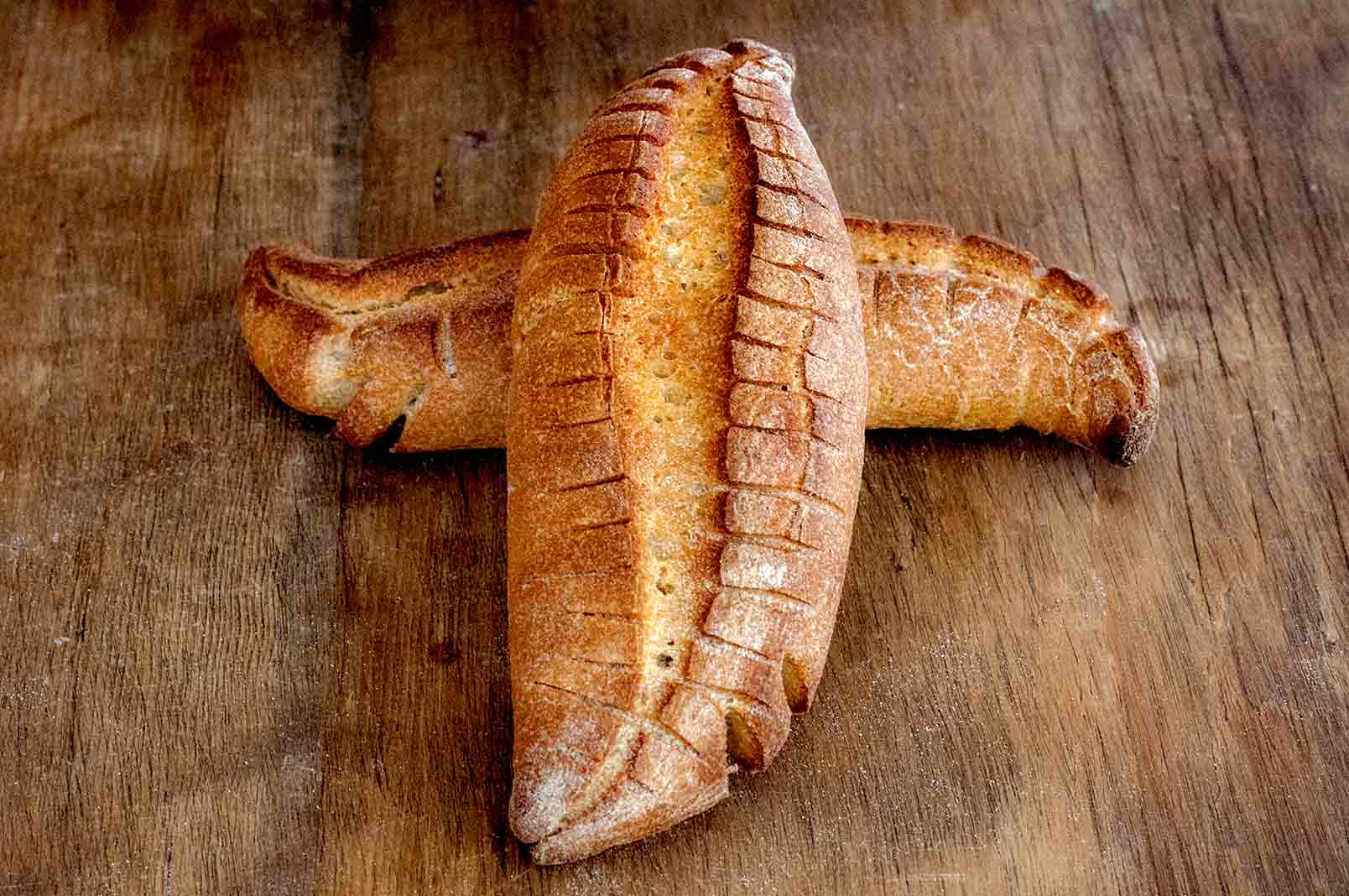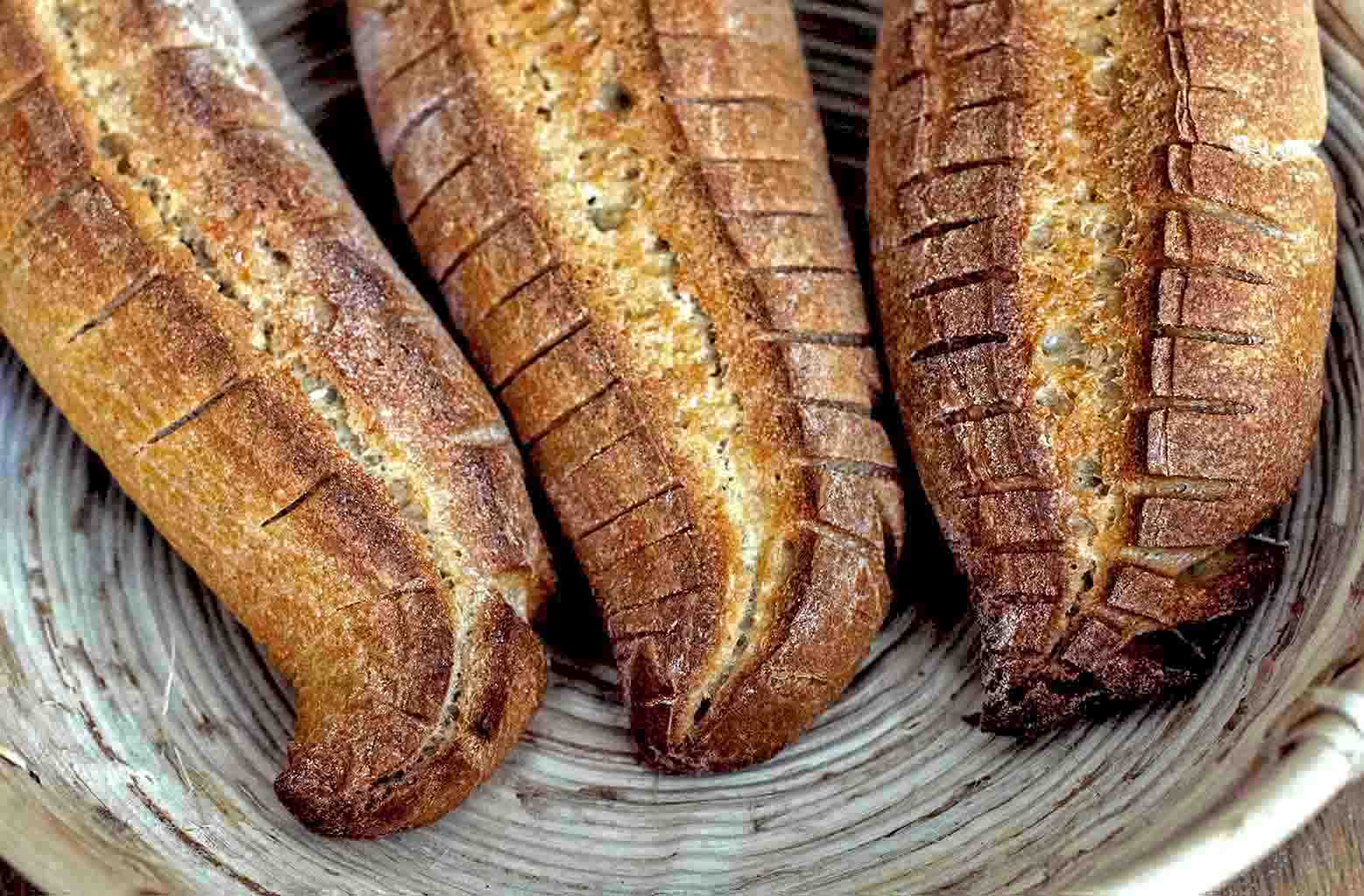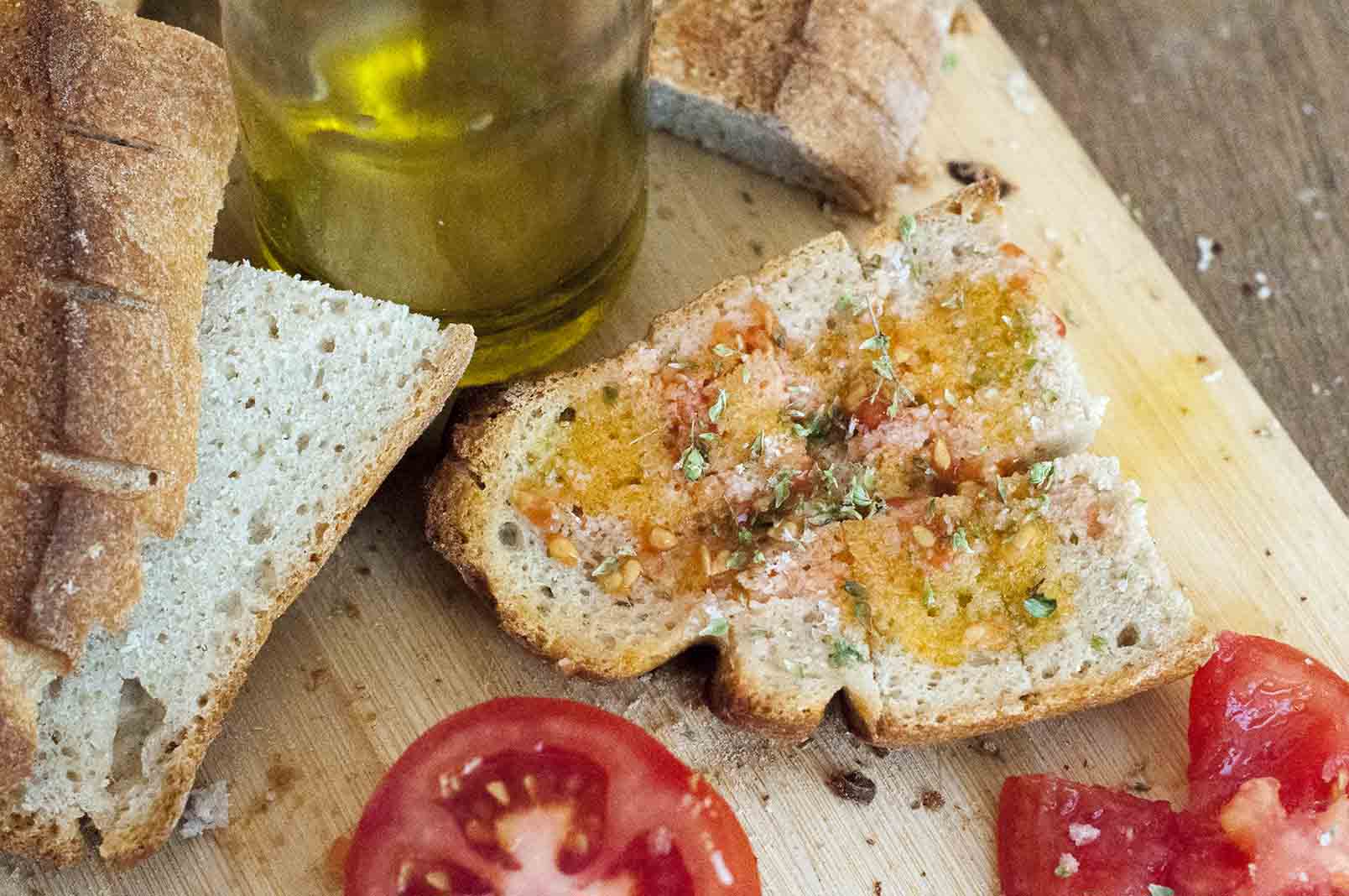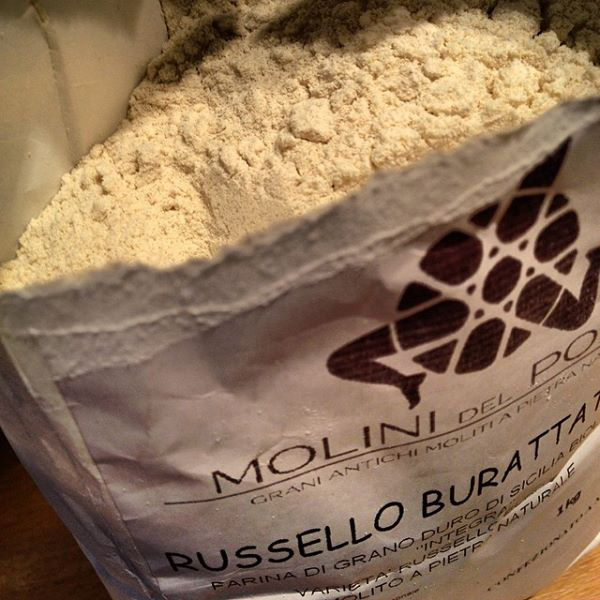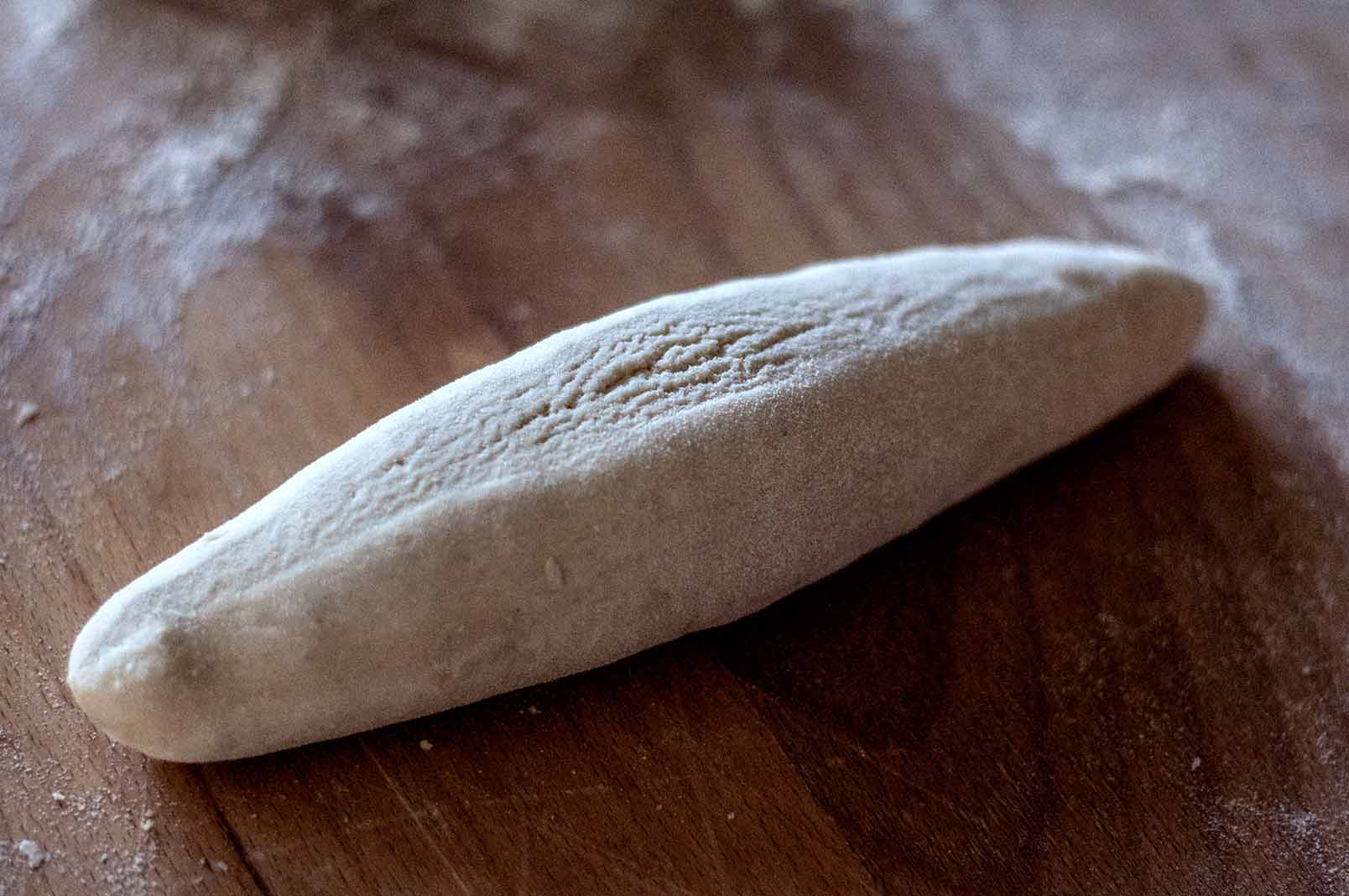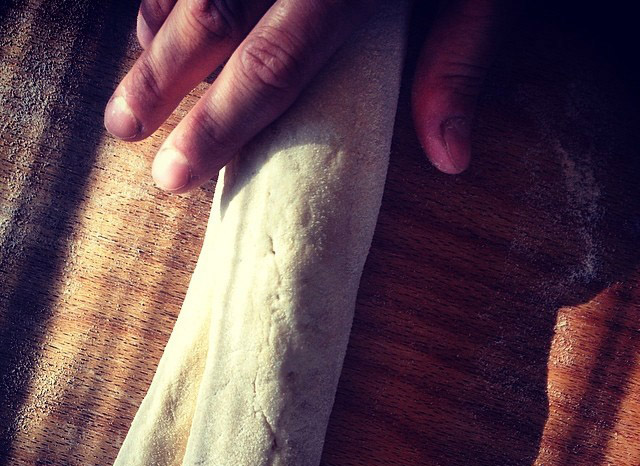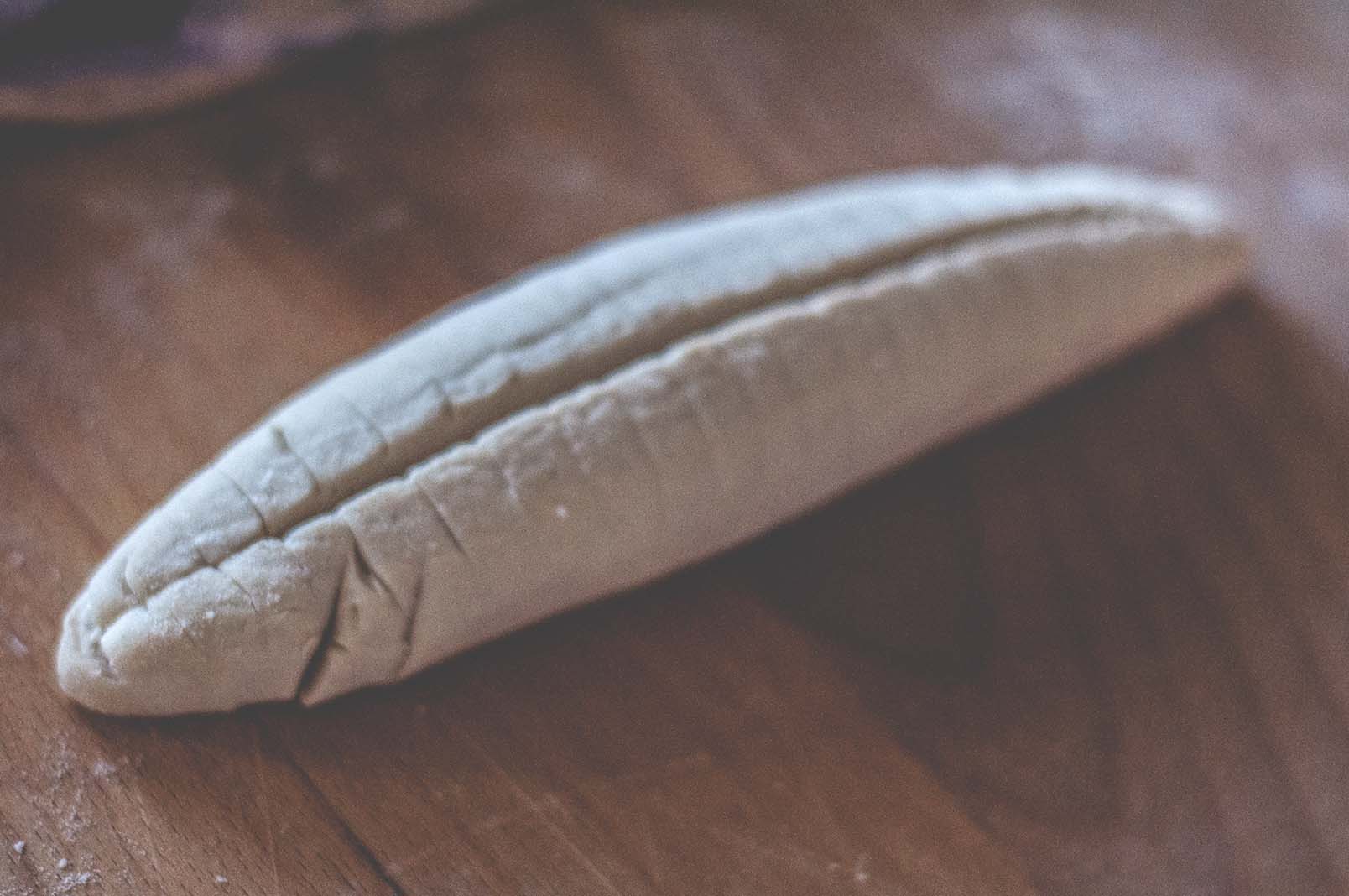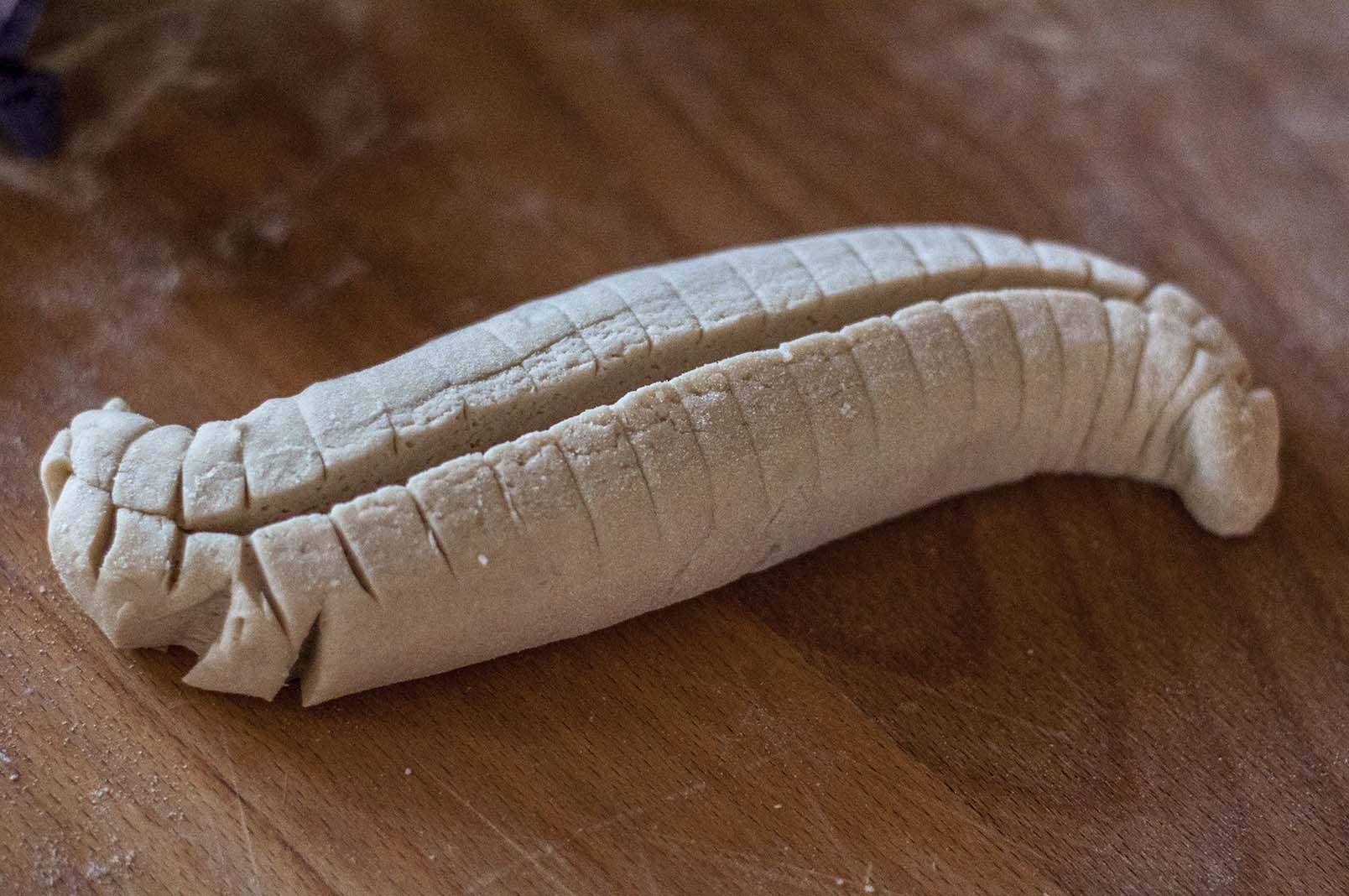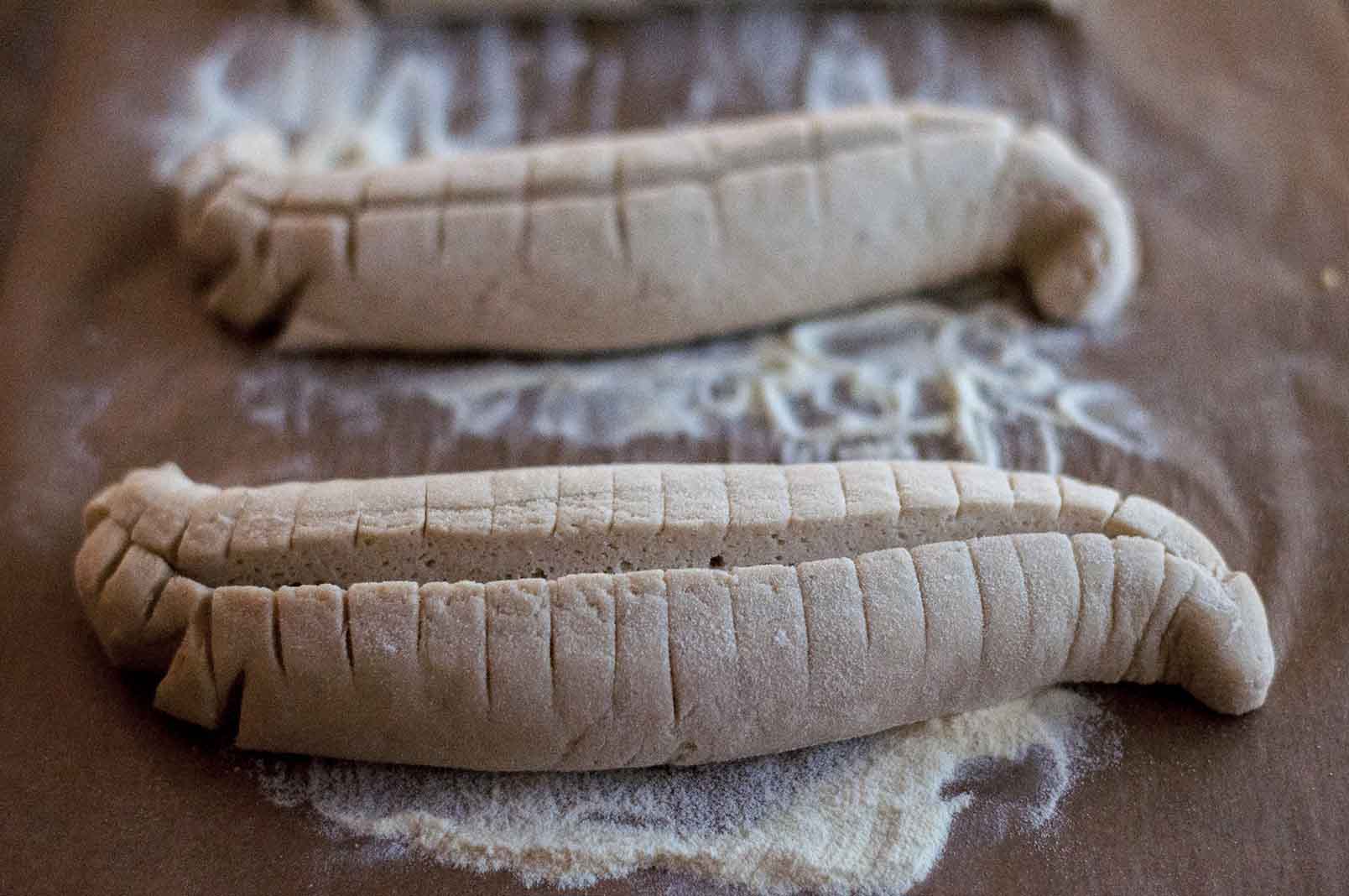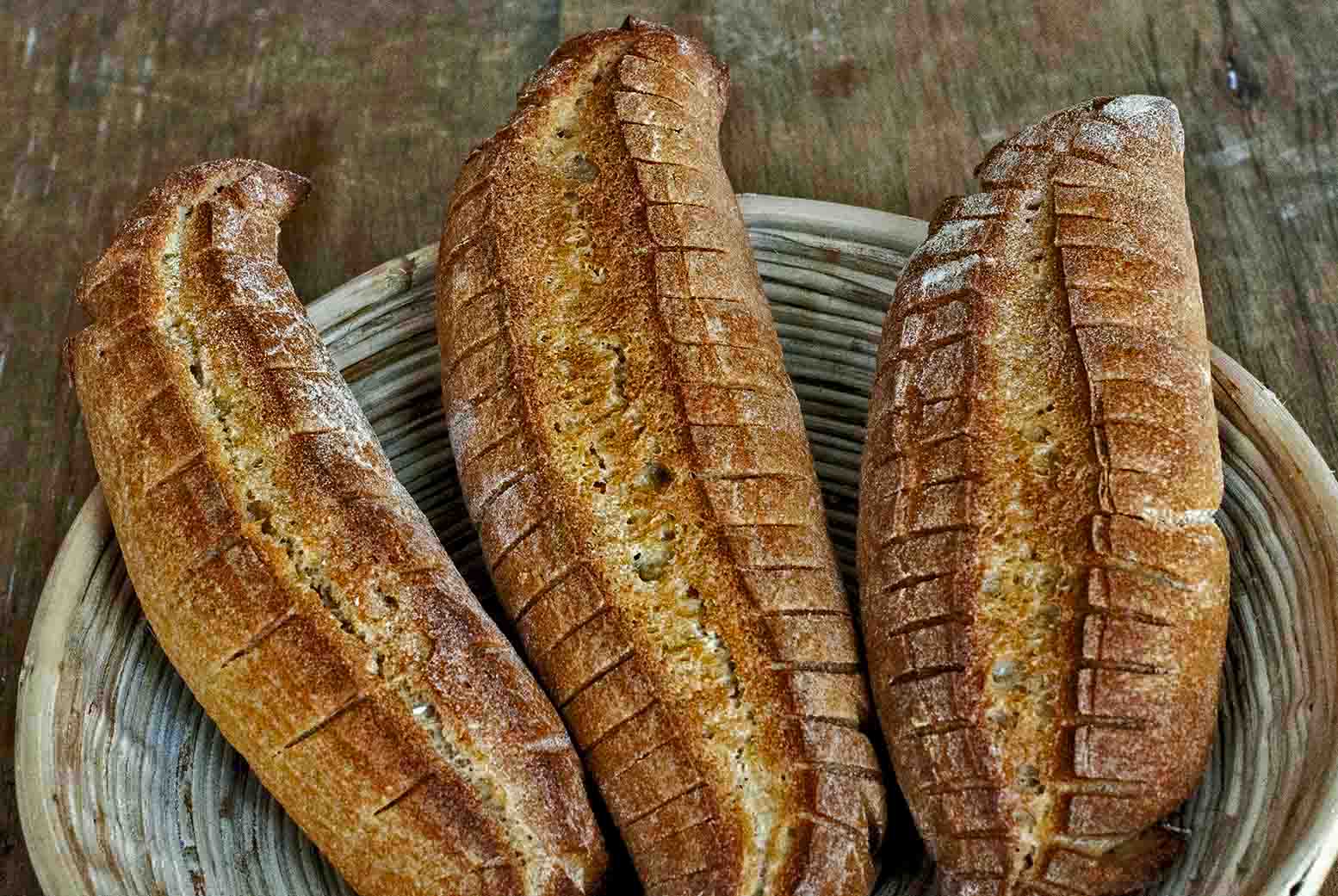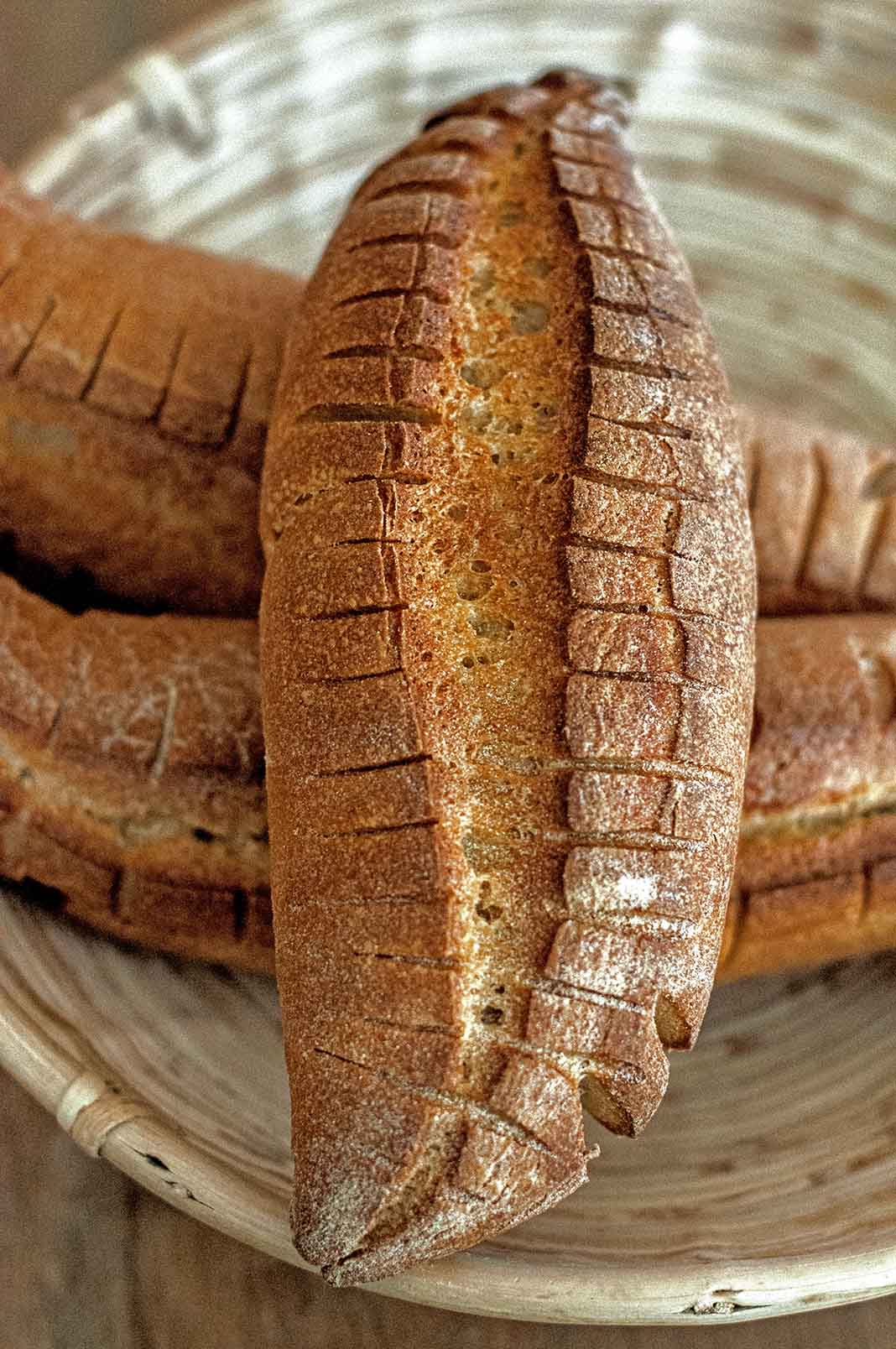The inspiration for reconstructing this traditional Sicilian bread comes from a drawing I saw in an agricultural article comparing different flours [L’Informatore Agrario, Supplemento 13/2006]. More and more my interest for bread is moving away from books about baking technique to go closer to the source. The bakers, the millers, and the farmers. The article, provided by the mill I have recently visited during my trip to Sicily, described some of the durum wheat varieties I brought with me to Sweden. The bread in the drawing, traditionally made in the Iblei region with Russello durum flour, was so oddly shaped that it captured my attention, driving it away from the text of the article (which I have not yet finished, I admit).
After some research of online sources, I came across a couple of recipes with tutorials for this Pane Ibleo, also called simply ‘U Pani Ri Casa. As the name suggests (pani ri casa means home-made bread) these loaves were made at home by women. This tradition was repeated every week, using mother dough from the previous week, and baking it in the closest wood-fired oven. The bread is based on a stiff levain and a stiff dough, it is folded on itself and cut in a particular way. I realize now that the central fold and the cuts may have served to better cook the crumb, a pretty dense one which does not incorporate many bubbles -and consequently does not incorporate much steam either, which tends to fill the air pockets during baking, helping the crumb to cook well (I have read this beautiful explanation in Pollan’s chapter on bread in his recent “Cooked” book).
Since I was using stiff levain like in the traditional bread -rather than commercial yeast like in the tutorials I found- and since I was using whole wheat durum from an ancient variety of Sicilian durum (Russello wheat) -rather than finely ground modern varieties- I had to figure out the recipe myself. The tutorials did help with the shaping, although I feel still far from being able to recreate the real thing as seen in drawings and pictures. My central cut did not open quite as much as it should have had, and this is because of the flour I used and because I don’t have a wood-fired oven. According to a local belief these loaves should not hold large hole or something bad could happen- maybe to warn home bakers from those fake air pockets given by the detachment of the crust?- so I am quite happy about my dense crumb here. And the bread was truly delicious eaten in the traditional way. Cunzato with fresh tomato juice and olive oil dripping into further cuts made into the crumb and seasoned with oregano and sea salt. Sicily in a nutshell.
PANE IBLEO – TRADITIONAL WHOLE WHEAT DURUM BREAD FROM MONTI IBLEI
200 g stiff (50% hydration) wheat sourdough starter, recently fed and allowed to rise
1 kg whole wheat durum flour (I used Russello semola burattata from Molini Del Ponte)
550 g water
3 teaspoon sea salt
Note before starting: if you are using, as I did, whole wheat durum I recommend kneading by hand. The stand mixer will not help much in handling this dough.
1. Place the flour on a kneading surface, make a “fountain” in the middle and put some of the water and the starter in the dwell, making sure to dissolve the starter well
2. Once the starter is dissolved, incorporate the flour, adding water along the way, and then the salt
3. Work the dough with passion (it took me close to 1 hours of passion, with intervals)
4. If the dough does not seem to come together into a smooth mix, add more water and let the dough get well hydrated. If you do, make sure to add more flour toward the end of the kneading, to get the right smooth and workable dough (it should feel like playdough, allowing you to shape it however you want)
5. Once the dough feels smooth, flatten it with your hands and fold in three, flatten again and fold in three again
6. Let rest, covered, for another half hour then repeat the folds
7. Place the dough in the fridge to rest overnight
8. After the rest, take the dough out of the fridge and allow to warm up at room temperature for 1/2 hour to 1 hour
9. On a floured surface divide the dough in 6 pieces, then proceed at shaping as shown in the pictures
10. Each piece of dough should be rolled out into a cilinder, then a central fissure should be made with the cut of your hand. The dough should be folded over the fissure and placed upside down. I forgot to do it, but it is important to slightly flatten the mini loaves at this point
12. There are two ways to go. One is to let the dough rise upside down without cuts, but this will work only if having a powerful oven spring; the other is making cuts which will help in case of poor oven spring
13. So this is what I have done, considering my poor oven and the low gluten flour I was using (which actually is the traditional flour used for this bread up to 150 years ago): I made a central deep cut with a razor, then I made smaller horizontal cuts, according to one of the tutorials I have read and some of the pictures I have seen
14. I have also made 4 further deep cuts, two at each end of the loaves, in a mirror-like fashion (see the pictures)
15. I then twisted the ends of the loaves and let rest with the fissure down and the cuts up, covered with plastic foil
16. After 1 1/2 hours I baked the breads at 250 degrees Celsius and initial steam, lowering the temperature progressively after the first 10-15 minutes
***DISCLOSURE: I get no economic incentive for supporting the flours I am using, this is just my personal contribution to biodiversity and traditional food survival.
